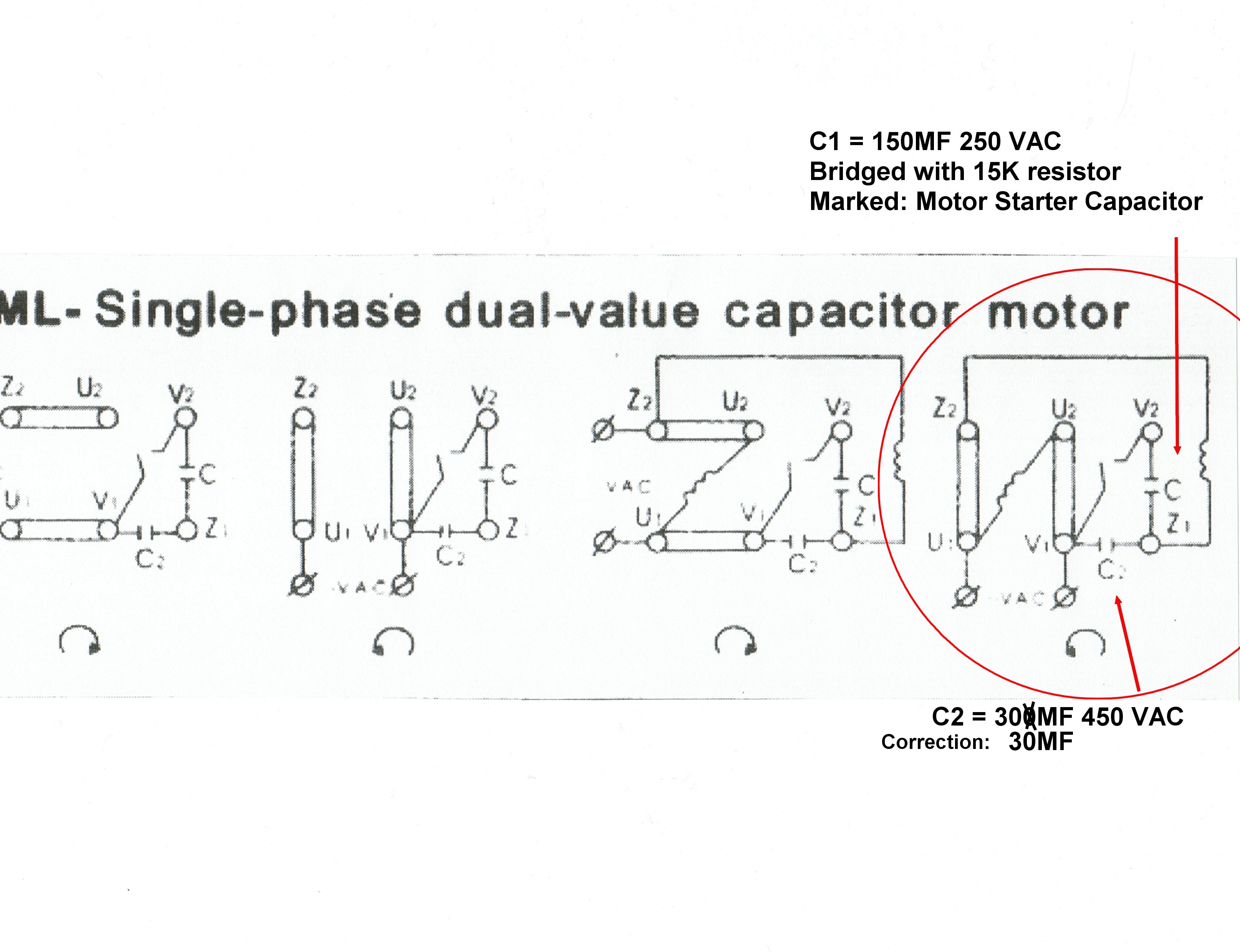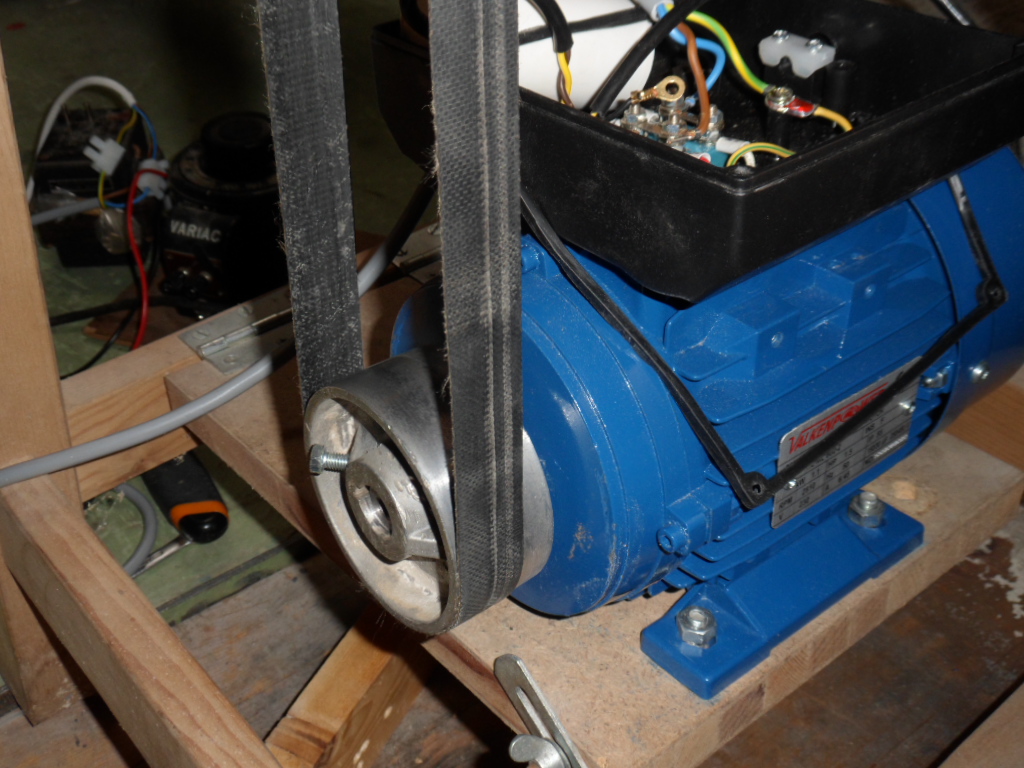elflop
Newbie level 4

I have a table saw which is driven by a 1.5HP single phase 220V induction motor. There are 2 capacitors in the motor's electrical connection box.
The motor drives the saw by a flat belt. The belt is 60 cm (2 foot) long and 2.5 cm (1 inch) wide.
I had to replace the original motor.
The new motor starts so quickly that the belt is immediately ejected from the flat pully. The old motor started nice and slowly and took about 5 seconds to reach maximum speed. I can't use any parts from the old motor.
I have made some experiments with an antique variac and have found that if I turn on the saw with about 115 volt it starts nice and slow. Because the variac became quite warm and smelly, I replaced it with an old movie transformer (220V -> 115V). This also works very nicely indeed but is much too large and heavy to be practical.
So now I need a lot of help. My plan is to use a timer to trigger a relay. The relay would initially connect the motor via the transformer and after about 3-5 seconds would connect the motor directly to 220V. I think I can manage the timer/relay part myself, but the transformer is my problem. I measure the current needed by the motor as at least 6A. Is it possible to use some other SIMPLE device/design instead of the transformer to regulate the initial speed of the motor?
Obviously, the less torque the better! I have googled a long time for this, and everyone says the problem with a triac is the torque - but I don't care about the torque, I just want the motor to start really nice and slowly until it gets up to speed when I can switch to direct 220V via the relay. And can I use a triac with an induction motor with 2 integrated capacitors?
I would really appreciate any help, or better still, a circuit diagram of how I can do the regulating part. Using a transformer is just too bulky (and expensive).
Thanks
The motor drives the saw by a flat belt. The belt is 60 cm (2 foot) long and 2.5 cm (1 inch) wide.
I had to replace the original motor.
The new motor starts so quickly that the belt is immediately ejected from the flat pully. The old motor started nice and slowly and took about 5 seconds to reach maximum speed. I can't use any parts from the old motor.
I have made some experiments with an antique variac and have found that if I turn on the saw with about 115 volt it starts nice and slow. Because the variac became quite warm and smelly, I replaced it with an old movie transformer (220V -> 115V). This also works very nicely indeed but is much too large and heavy to be practical.
So now I need a lot of help. My plan is to use a timer to trigger a relay. The relay would initially connect the motor via the transformer and after about 3-5 seconds would connect the motor directly to 220V. I think I can manage the timer/relay part myself, but the transformer is my problem. I measure the current needed by the motor as at least 6A. Is it possible to use some other SIMPLE device/design instead of the transformer to regulate the initial speed of the motor?
Obviously, the less torque the better! I have googled a long time for this, and everyone says the problem with a triac is the torque - but I don't care about the torque, I just want the motor to start really nice and slowly until it gets up to speed when I can switch to direct 220V via the relay. And can I use a triac with an induction motor with 2 integrated capacitors?
I would really appreciate any help, or better still, a circuit diagram of how I can do the regulating part. Using a transformer is just too bulky (and expensive).
Thanks





